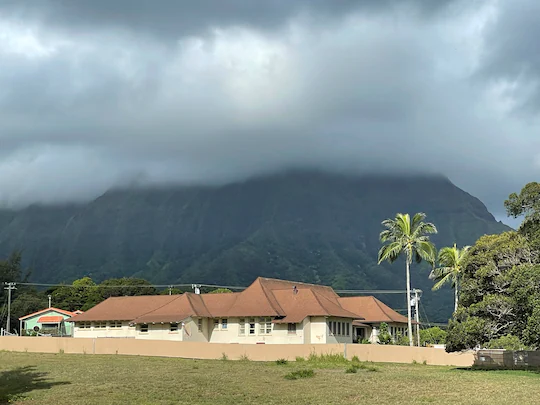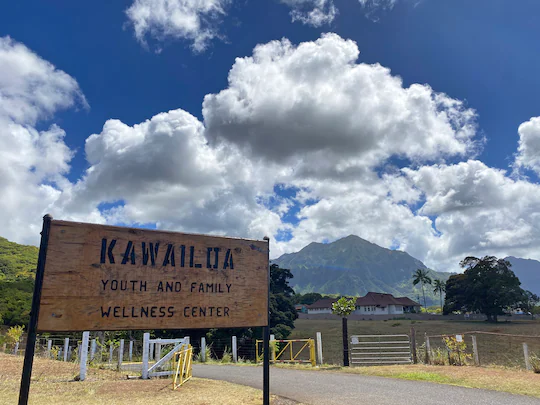Original story shared on The Washington Post by Claire Healy on July 25, 2022, click here to read.
When Mark Patterson took over as administrator of the Hawaii Youth Correctional Facility in 2014, he inherited 500 acres of farm ranch — and the care of 26 boys and seven girls between 13 and 19 years old.
By 2016, his facility, in Kailua, Oahu, was only holding between five and six girls at a time. And in June, the last girl left the facility.
For the first time, there are no girls incarcerated in the state of Hawaii.
Patterson said this moment is “20 years in the making,” and the result of a systemwide effort to divert girls from the judicial system and into trauma-based care programs. The number of incarcerated boys has also lowered significantly in the past decade, he added.
Patterson said HYCF is a last resort — the kids there “have run away from programs 10 to 11 times” and are the most vulnerable of the high-risk youth. But various state officials have agreed that “we no longer want to keep sending our kids to prison,” Patterson said.

“What I’m trying to do is end the punitive model that we have so long used for our kids, and we replace it with a therapeutic model,” he added. “Do we really have to put a child in prison because she ran away? What kind of other environment is more conducive for her to heal and be successful in the community?”
Hawaii isn’t the only state to reach zero girls in long-term placement facilities.
According to Lindsay Rosenthal, director of the Vera Institute’s Initiative to End Girls’ Incarceration, Vermont has zero long-term placement facilities for girls, and for nine months in 2020, Maine had zero incarcerated girls statewide. Since February 2021, New York City hasn’t had more than two girls in the state’s juvenile placement facility at any given time.
After 35 years, a lawsuit over ‘inhumane’ juvenile detention in D.C. has led to major reforms
This is part of a larger trend in juvenile justice reform: Since 2000, more than 1,000 juvenile facilities have closed, including two-thirds of the largest facilities. And between 2000 and 2018, youth incarceration rates dropped by more than half, according to the Square One Project, a justice reform initiative.
But just as women are the fastest-growing prison population, the proportion of girls in juvenile detention has increased even as overall numbers have gone down. Researchers also estimate a disproportionate number of incarcerated youth are nonbinary or transgender, although there is limited data on this. As advocates point out, the majority of incarcerated girls are in prison for low-level offenses, often influenced by a history of abuse — as noted in various research — or systemic challenges, such as poverty.
Rosenthal said juvenile justice reform has progressed dramatically in the past 10 to 15 years. But she emphasized that a state reaching zero doesn’t necessarily reflect progress — Vermont has sent some girls to facilities in New Hampshire, and placed at least one girl into an adult prison, for example — without the presence of community-based alternative programming. HYCF is an example of a facility that has seen such an investment pay off, she said.
Gender-focused programming is essential, Rosethal added, because of “the criminalization of sexual abuse.” This legacy, she said, reaches back to colonization and slavery in the United States and has resulted in the disproportionately high incarceration rates of Black and Indigenous women and girls.
“No matter what girls are charged with in the juvenile legal system today, the most common reason why they’re incarcerated, which most leaders openly talk about, is that they are not safe in the community,” she said. “That’s wrong, and it has incredibly deep historical roots.”
The history of HYCF has also been thrown into the spotlight this year: In May, the Interior Department released an investigative report that found thousands or tens of thousands of children died in the custody of federal boarding schools, which operated between 1819 and 1969 and separated Native American and Native Hawaiian children from their families. Among their list of schools implicated in Hawaii are the Kawailoa and Waialee Industrial and Reformatory Schools, HYCF’s direct predecessors that merged into the facility in 1961.
The facility also received attention in the early aughts, when a 2004 Justice Department investigation found that the facility was in a “state of chaos” with rampant abuse. The American Civil Liberties Union won a lawsuit against HYCF in 2006, in which three young people charged the facility and its staff with homophobic and transphobic abuse.
Investigation finds burial sites at 53 federal Indian boarding schools
Patterson said the movement to replace punitive systems with trauma-informed care in Hawaii’s juvenile justice system reaches back to 2004, when Judge Karen Radius, a now-retired First Circuit Family Court judge, founded Girls Court. One of the first in the nation, the program aimed to address the specific crimes and trauma history of girls.
“News that there are currently no girls in the Hawaii Youth Correctional Facility at this point in time is great news. But we know it doesn’t mean we have solved all the issues facing girls and young women,” Radius said, noting her concern that pandemic shutdowns and policy changes may have barred at-risk youth from receiving necessary support.
Many influential programs in the state followed the formation of Girls Court. In 2009, Project Kealahou launched as a six-year, federally funded program aimed at improving services for Hawaii’s at-risk female youth. And in 2013, Hawaii created the Juvenile Justice Reform Task Force to analyze the juvenile justice system in Hawaii and provide policy recommendations aimed at reducing the HYCF population.
Then, in 2018, Patterson partnered with the Initiative to End Girls’ Incarceration and drafted a “10-year strategy to get to zero.” The overarching goal was to focus on the underlying trauma the youth were suffering from, instead of the crimes they were charged with, Patterson said.
Before working with youths, Patterson was the warden of Hawaii’s only women’s prison, the Women’s Community Correctional Center (WCCC), across the street. He said his time there showed him how many of the women there could trace their trauma back to their home life as a child.

That same year, he set out transitioning HYCF into the Kawailoa Youth and Family Wellness Center, remodeling the program around trauma-informed care — a framework for care providers to understand and consider the impact an individual’s trauma history has on their life and health. Today’s campus has a homeless shelter, an assessment center, a vocational program serving youths ages 15 to 24, a farm managed by a nonprofit and a high school for high-risk youths.
Guiding this transformation was Patterson’s goal of creating a pu’uhonua — a place created within a traditional Hawaiian village for conflict resolution and forgiveness — for Hawaii’s most vulnerable youths.
As Patterson described it, a pu’uhonua acknowledges and identifies a wrong that has been committed in the village. But unlike a punitive system, “we’re going to teach you how to live with the village and manage the wrong,” he said. “So that you’re no longer an outcast, but you’re still welcome back.”
Throughout decades of criminal justice reform in Hawaii, advocates have drawn attention to the disproportionate incarceration of Native Hawaiians. A study by the Office of Hawaiian Affairs in 2009 reported that Native Hawaiians were more likely to get a prison sentence than any other ethnic group in Hawaii, and that their prison sentences were likely to be longer.
Patterson said that in his experience, a disproportionate amount of teenagers coming to him are Native Hawaiians — both the girls and boys at his facility.
The OHA attributes the overrepresentation of Native Hawaiians in the criminal justice system to disparate treatment. Its 2009 report described discrimination within the courts, parole practices and during interactions with correctional staff. It also detailed culturally inappropriate reentry services for Native Hawaiians.
For Toni Bissen, executive director of the Pu’a Foundation, an organization focused on healing and reconciliation efforts related to the 1893 overthrow of the Hawaiian Kingdom, it all comes back to trauma: personal, historical and intergenerational.
“The generational aspect of loss and power, poverty, violence that just kind of compounds,” she said. “That is what is happening in these households. And that’s why drugs, truancy and different kinds of things are outlets.”
The Pu’a Foundation ran a pre-transition class for the last four girls incarcerated at HYCF. But another important task in the transition was identifying programs that could provide them with specialty care. For some previously incarcerated girls, Pearl Haven was that place.
Created two years ago by the nonprofit Ho’ola Na Pua (HNP), Pearl Haven is the first live-in care center on Hawaii for survivors of sex trafficking and sexual exploitation. Jessica Munoz, president of HNP, said she saw a need for Pearl Haven when she was working as a clinical nurse practitioner in Hawaii.
“When I first started, we were arresting kids,” she said. “We weren’t screening for sexual exploitation or trafficking among the court system, among the child welfare system.”
Tammy Bitanga, a lived experience expert and outreach coordinator at HNP, sees the release of the girls at HYCF as a positive step forward. As a survivor of sex trafficking, she said she has also seen firsthand how the Hawaii juvenile justice system is changing.
She was trafficked in the 1970s, she said, when “there was no word called trafficking.” Instead, she was seen as an underage prostitute. “I hid behind that,” she said. “So I never told anybody what I was doing while I was on the run for nine months from the system.”
Now, the system is providing young women with the chance to look at “what was done to them, instead of what they’ve done,” Bitanga said.
Cathy Betts, director of the Department of Human Services in Hawaii, said reaching zero gave her “hope for the future” — and that trauma-informed care is necessary for “any work involving humans.”
For her, this is also a bittersweet moment: a reflection of many Hawaiians working to improve the lives of at-risk girls, which she saw firsthand while leading the Hawaii Commission on the Status of Women.
“You’ve got to understand that people’s blood, sweat and tears went into this moment,” she said, tearing up. “We’ve got judges that retired that weren’t able to see this moment, that passed, that spent their whole lives as attorneys and litigators and people who serve children and families who weren’t able to see that moment. It doesn’t happen overnight.”
Patterson is now turning his attention to helping expand legislation on trauma-informed care. In 2021, state lawmakers passed a bill establishing a trauma-informed care task force within the Department of Health, which Betts is a part of. And on July 12, lawmakers passed a bill establishing a temporary office of wellness and resilience in the office of the governor, which is authorized to address issues and implement solutions identified by the task force.
Despite this progress, Patterson said, the job is far from over.
“This is not a zero … everybody’s finished, we can go home,” he said. “Now the question is sustaining zero.”

